“Somewhere over the rainbow”
sang Judy Garland eighty years ago, playing Dorothy in the fantastic world of “The Wizard of OZ”. The rainbow has always inspired poets, singers and writers of stories, such as the Irish legend about a green-hatted elf guarding the fairies’ treasure right at the end of a multicoloured arch. Let us go searching for the pot of gold in Cicolano!
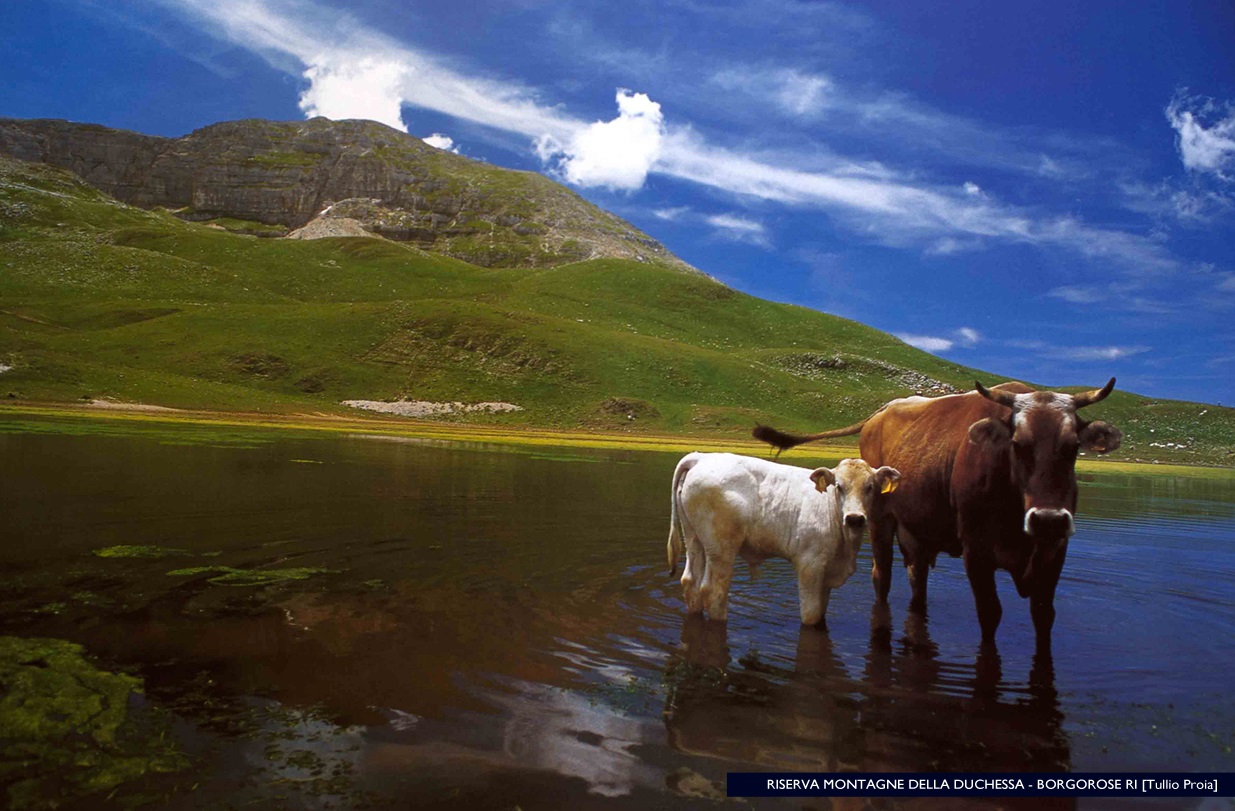
The Cicolano area in Southern Sabina stretches from the Valle del Salto River to the Duchessa Mountains, the Rascino Plateau (over 1000 metres above sea level and home of the Slow Food Lentil), and the Nuria, Navegna and Cervia Mountains. Let us first explore Borgorose, one of the seven villages in Cicolano on the Lago del Salto, the turquoise gem sparkling brightly among the emerald woods of the two Natural Reserves “Monti Navegna and Cervia” and “Montagna della Duchessa”.
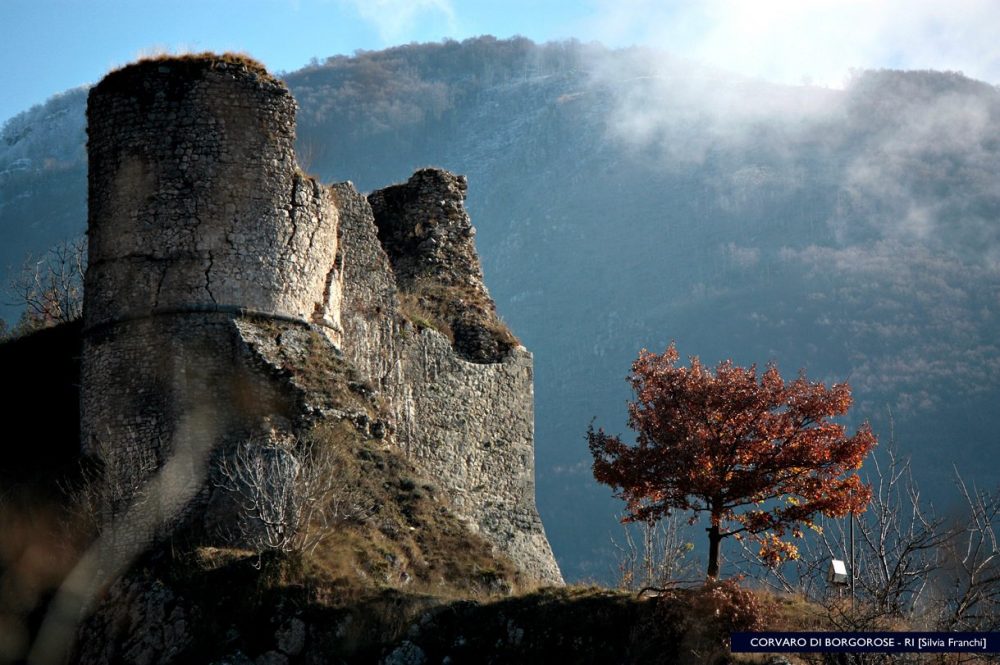
In Corvaro, the findings preserved in the “Museo Archeologico Cicolano”, as well as a 50 m wide and almost 4 m high imposing funerary mound, bear testimony of a distant past. The Equicoli, the descendants of the ancient Equi, were confined in these impervious mountains. Coming back to the present day, let us discover the typical dishes of the area, such as the pizza sfogliata, filled with minced meat, pepper and cheese, and the Serpentone of Sant’Anatolia, a cake of pagan and Christian origins, prepared with almonds, eggs, lemon and coffee.
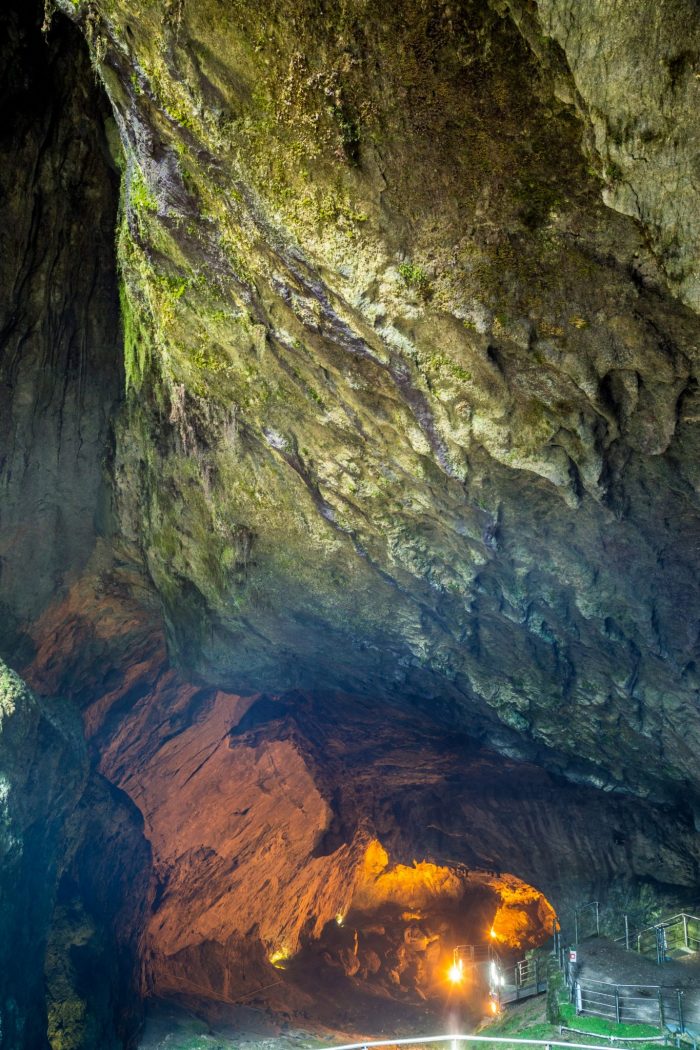
Along the jagged shores of the Lago del Salto, we come across the village of Pescorocchiano, overlooking the Valle del Salto from a rocky ridge and surrounded by natural pastures and the oaks and chestnut trees of the Carseolani Mountains. We now continue towards the southern slope of Mount Sant’Angelo and explore the1800 metres deep Cave of Val de’ Varri. A foaming karst river runs along its length, creating underground waterfalls and small cascades. Nature, in this enchanted place, tells the ancient story of the Bronze Age and the first human settlements.
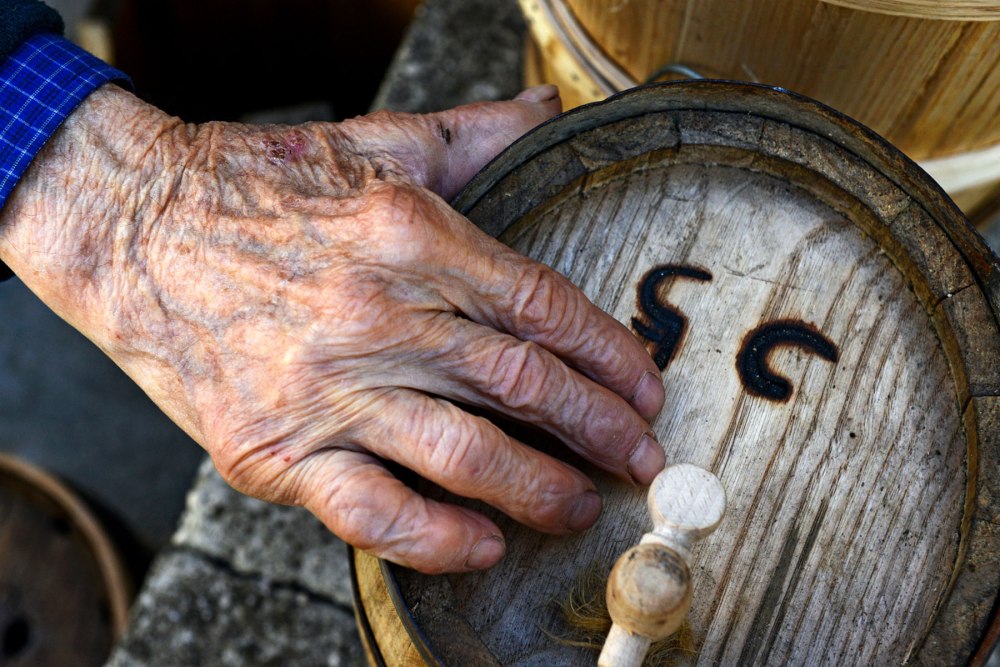
Our journey continues towards Marcetelli, the smallest village in Lazio, counting less than one hundred inhabitants! Let us admire this fascinating jewel of stone, which winds its steep way up Mount Navegna.
Here, we can still enjoy the atmosphere of the past, visiting the workshops of the master coopers, who create vats, tub and barrels of chestnut wood by hand. The “Bottega del Cerchiaro”, the first museum entirely dedicated to this art, displays craftsman tools, such as pialle, toghe, cortellu elle toe e segarellu.
Before leaving, let us not forget to taste the local excellence, the delicious red chestnut of Marcetelli.
Arrived in Varco Sabino, a village nestled in the rocks, we peek among the stone buildings in search of our longed-for rainbow. Let us enjoy the shady greenery in the Natural Reserves of Monte Navegna and Monte Cervia, or a pleasant horse ride along an over two hundred km trail, surrounded by a breathtaking, uncontaminated scenery, from Poggio Moiano to Varco Sabino, Marcetelli, Val de’ Varri Cave, Ascrea and Paganico Sabino, through the Gola dell’Obito.
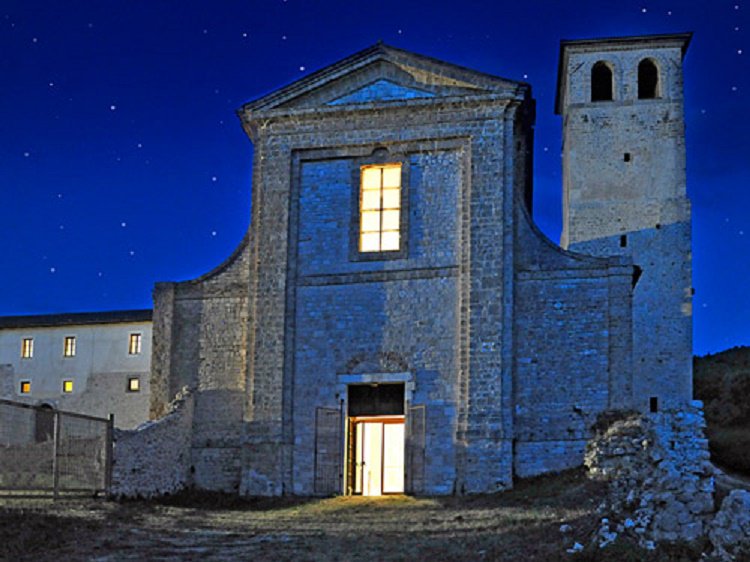
Still no rainbow? Let us try in Concerviano, in the green heart of the Valle del Salto, where an ancient architectural masterpiece is preserved, the Benedictine Abbey of San Salvatore Maggiore. Its severe walls still treasure precious portals, friezes and porticoes.
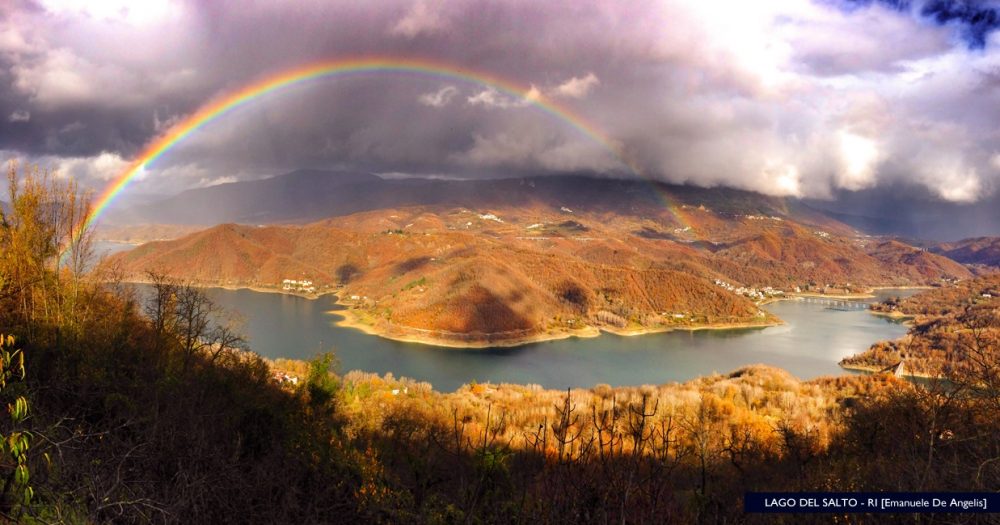
Suddenly, as we get closer to Lago del Salto, the rainbow appears in all its splendour! We have reached Petrella Salto, where the longed-for seven colours reflect in the lake!
In the small hamlet of Borgo San Pietro, we get to know the stories of two women with opposite personalities, Filippa Mareri and Beatrice Cenci.
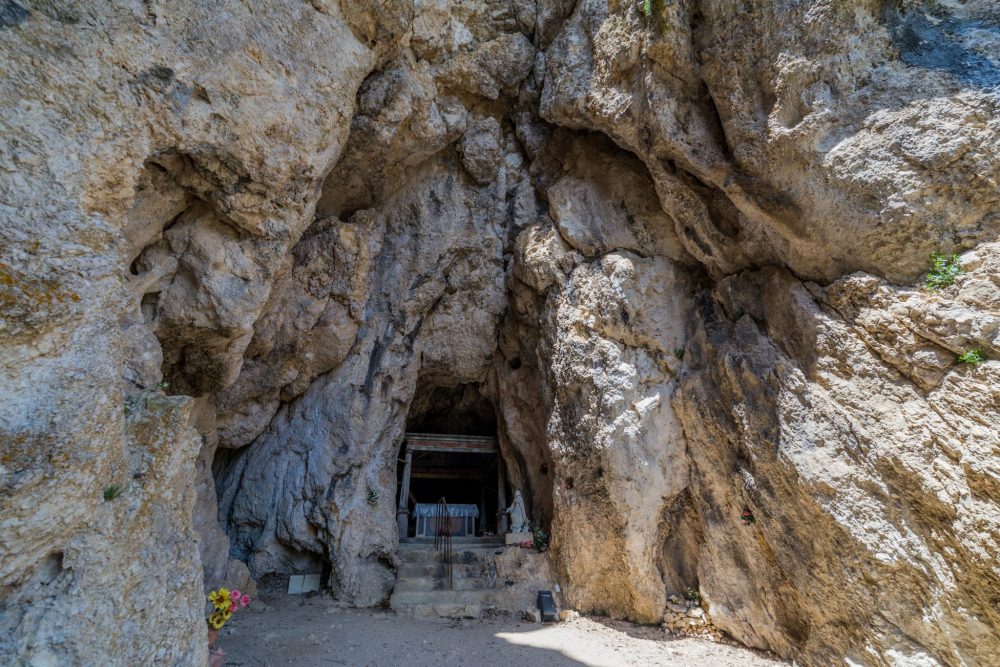
Filippa Mareri founded, in 1228, the first Franciscan Monastery of the Poor Clare nuns submerged by the artificial lake in 1940. The Saint lived as a hermit in the natural cave overlooking the present monastery, reachable through a path, from where it is possible to enjoy the stunning views of the Lake and the Valle del Salto.
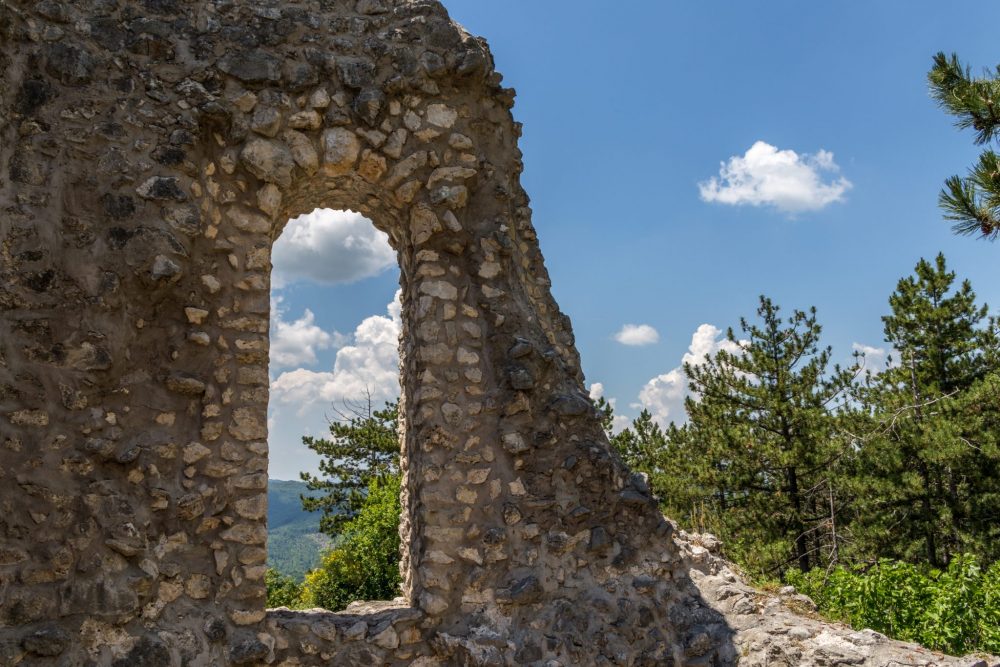
The somewhat fictionalized story set in Rocca dei Cenci on the other hand, concerns the Roman noblewoman Beatrice Cenci, who, in 1500, was first executed for parricide and then celebrated as a popular heroine.
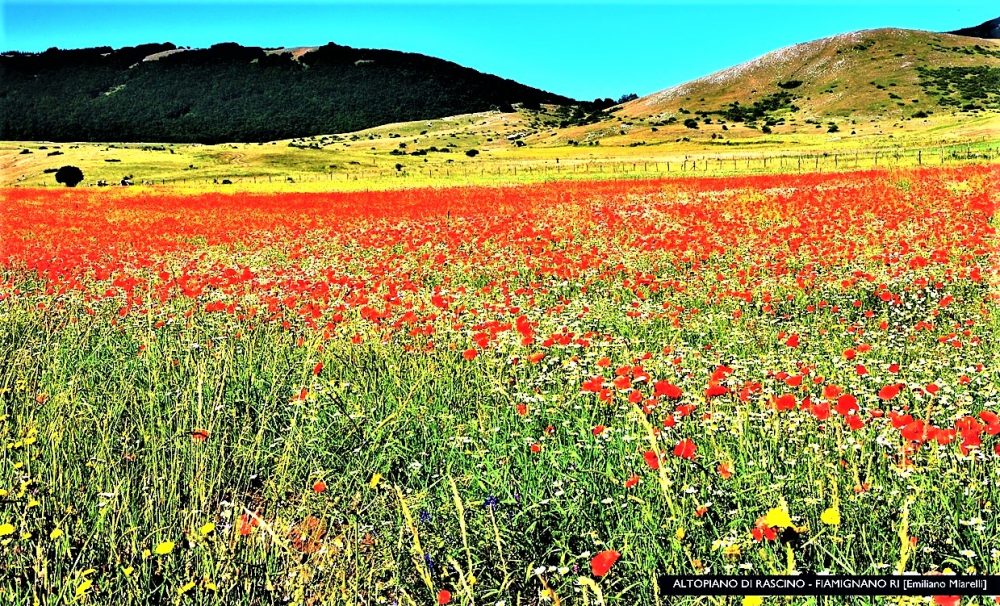
Finally, let us give in to the temptation of a bicycle ride to Fiamignano and the Rascino Plateau while deeply breathing the heavenly atmosphere of the place!
“lo sai che i papaveri son alti, alti, alti”
Humming this popular tune inspired by the poppies in bloom, we lie on the grass, savouring the smell of lentils in the air, and wonder whether this delicacy is the true treasure in the pot at the end of the ultra-coloured arch.
